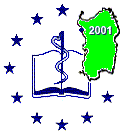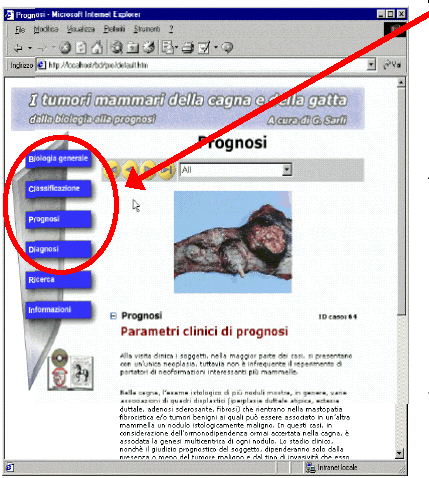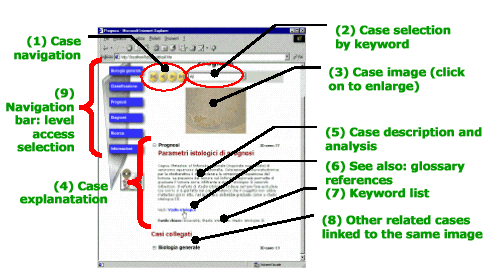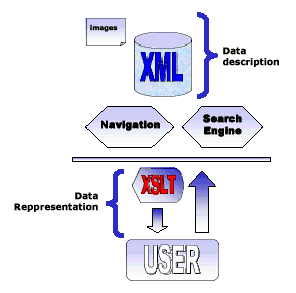 |
Building a research tool: the database
of mammary dysplasia and neoplasia of dog and cat.
Giuseppe Sarli*, Mirella Mazzucchi**,
Luca Cartoceti**
|
|
|
Click here to see the poster in pdf format |
|
|
 |
Purposes
Supplier of new technical aids for implementation of didactical-scientific products is one of the new roles which a specialized library is asked to assume at the present day. This poster will show a sinergy, that has taken place at the Biblioteca Ercolani of the Universita' di Bologna, between librarian, information technology technician and university professor, which has led to the realization of a database of images and texts on the mammary dysplasias and neoplasias of the dog and cat. The project is a part of the Multimedia Jukebox, which our library wishes to make in order to offer all its productions to the public via the web. The Multimedia Jukebox is a centralized system for the collection and distribution of multimedia material: short films, sound recordings, animated and photographic representations, and their related texts. The main characteristic is that the multimedia material is described/catalogued and that the different format typologies are made uniform, in a way that permits a better distribution to the authorized users that access these files. Infact, the choice to create a web site permits freedom from the formality of consulting diverse typologies of support material. Database organization at the didactical level In consideration of the high frequency of mammary tumours in dogs and cats, aim of this database is to use these tumors to give information concerning: The database is organized into four levels of access that reflect the different degrees of information acquired during courses of pre and post-degree veterinary schools and information asked more frequently by pratictioners. Data Presentation: Navigating and Searching Each
case is presented with a title, an associated image (3) that can be enlarged
in another window, and text (5) that describes and analyses the image.
There can also appear glossary references (6) you can view in another window.
For every case, keywords (7) are given to help in identification. If the
same image is given at a lower level of analysis, the related case is linked
(8). Navigational interface is essential. On the left side, (9) a navigation bar is presented to select different access levels. At the top (1) a button bar is given to help you move from one case to another. To the side of these, is a combobox (2) that lists
all the keywords present in the chosen level so you can select only those
cases that contain the chosen keyword.
Software implementation of the database and requirements The
database was created in the XML (eXtensible Markup Language) format making
use of XSLT (eXtensible Stylesheet Language Transformation) for the representation
of data. The choice of XML is motivated by the fact that this language
guarantees an elevated flexibility and potential, as well as being highly
portable and easy to maintain. For future extensions, deep modifications
to the application won't be necessary. The application is composed of HTML pages, JavaScript executed at the client and XSLT filters acting all together as container. In this way all the logic and load of elaboration are placed on the browser allowing that the database can be installed on a web server or a CD. Requirements for correct execution are MS Internet Explorer v.5.0 or higher and the parser MSXML v.3.0, given freely from Microsoft's web site. Application was created with: Macromedia Dreamweaver v.4.0 and Macromedia
Fireworks v.4.0 for HTML pages and Javascript, XML Spy v.3.5 to develop
XML database and XSL transformation.
Future Extensions As it is so far realised, the database
will be translated into English, which is already happening as a method
of standardisation. It would be promising to study the possibility of obtaining
from the query a research file that automatically examines communally used
bibliographic databases. (Medline, Cab, etc.). |
|
|
|
|



